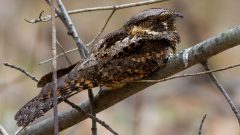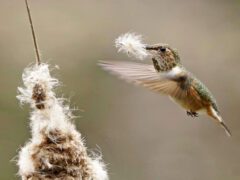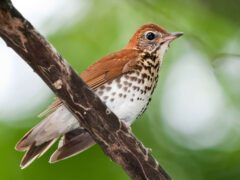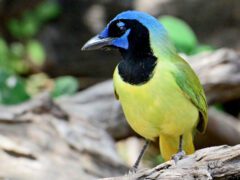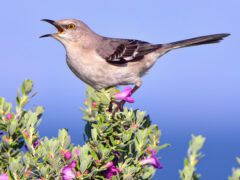Eastern Whip-poor-will Photo Gallery
Adult
Round-headed nightjar with a stout chest. Patterned with a complicated mottling of gray and brown, which provides good camouflage. Note gray line of feathers on the back.
© Josh Davidson / Macaulay LibraryOhio, May 03, 2018Adult
Note blackish throat bordered by thin white collar, large eyes, small bill, and whisker-like rictal bristles around the mouth.
© Dominick Fenech / Macaulay LibraryMichigan, June 20, 2020Adult
Intricately patterned in gray and brown, which provides nearly perfect camouflage on leaf litter or tree bark. Blackish throat and white bib are conspicuous on singing birds on the rare occasion when they are observed during daylight.
© Michael DiGiorgio / Macaulay LibraryConnecticut, June 15, 2014Not all videos have soundAdult
Round-headed nightjar with line of gray feathers on the back. Females have small buffy tail corners and males have large white tail corners, visible in flight.
© matthew sabatine / Macaulay LibraryPennsylvania, May 08, 2020Adult
Typically roosts on limbs close to ground with body parallel to branch.
© Ryan Zucker / Macaulay LibraryNew York, May 08, 2019Active during the night; typically sleeps during the day, when its camouflaged plumage can make it very hard to spot.
© William Orellana (Beaks and Peaks) / Macaulay LibraryAtlántida, March 08, 2020Not all videos have soundHabitat
Can turn up in a variety of habitats, including dense undergrowth, during migration. Breeding habitat, however, is typically dry deciduous or mixed forest with little or no understory.
© Mikey Lutmerding / Macaulay LibraryMaryland, April 29, 2012Compare with Similar Species
Click on an image to compare
Species in This Family
Nightjars and Allies(Order: Caprimulgiformes, Family: Caprimulgidae)
More to Read
Don't miss a thing! Join our email list
The Cornell Lab will send you updates about birds,
birding, and opportunities to help bird conservation.











